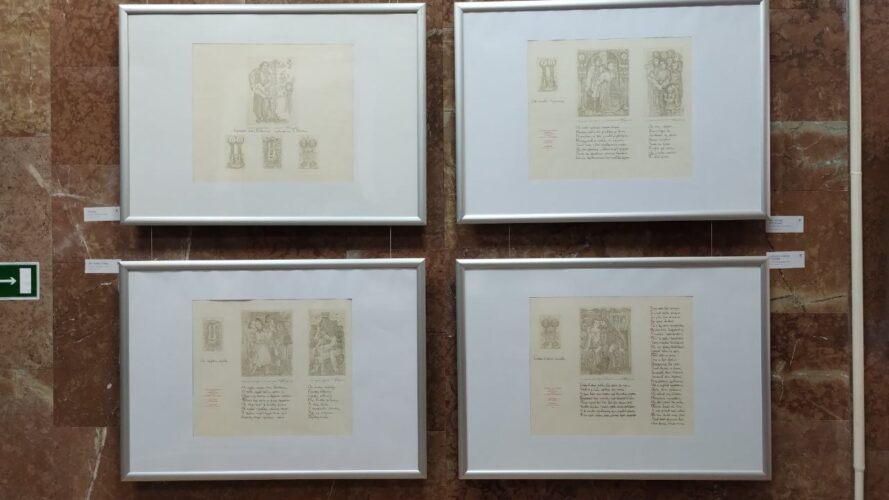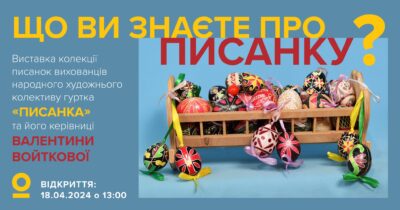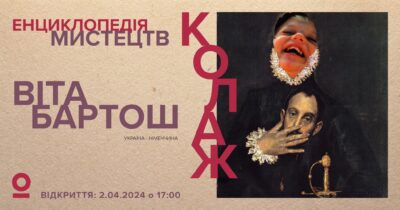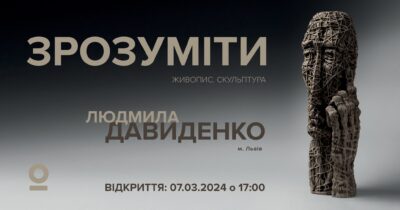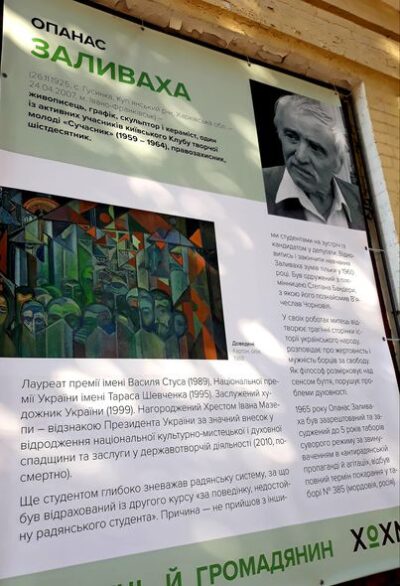KhRMA continues the project “Cheers!” dedicated to the artists who will be celebrating their anniversaries in 2024. Despite the bloody war and all the extremely difficult challenges that have fallen to our lot, Ukraine is fighting for our Independence, for Freedom, for Identity. For the right to live freely on our land. Our museum is also fighting, popularizing the national art that identifies us as Ukrainians.
Borys Nehoda’s journey to becoming an artist began at the age of eight, when he was presented with a set of five colored pencils. Since then, he has not let go of the pencil. His parents strongly supported their son’s passion for drawing, as he was born into a loving and creative family. His father was a regent in a church choir, and his mother sang beautifully – Borys absorbed his love for song, folk art, and the Ukrainian language with his mother’s milk. Thus, since his student years, he has been creating illustrations for songs. Over time, his work grew, and the topic of his diploma thesis was “Lirnyk’s Songs of Podillia” (1974).
The graphic series demonstrates the professional maturity of the young artist. The works are characterized by a perfect drawing, clear singing lines, an original compositional solution, the drawing is successfully harmonized with the text. By the way, etching is considered one of the most difficult graphic techniques, because the drawing is applied with a needle to a metal plate, etched with acid and does not require any corrections. Working with book graphics and design, developing fonts are creative tasks that Borys Nehoda began to get interested in while still at the institute.
The presented works of the artist are deeply national, they are influenced by the Ukrainian Baroque period, especially by old printed books of the 17th and 18th centuries. It is worth noting that in the context of Russian aggression, when the enemy brazenly claims that Ukrainians do not exist, the series “Lirnyk’s Songs” is of particular relevance. It is a kind of antidote to Russian poisonous propaganda.
Lirnyks as a phenomenon in Ukrainian culture emerged with the spread of the wheeled lyre in the 16th century. (The appearance of this musical instrument was reproduced in the sculptural composition “Joseph and Maria” by Roman Petruk (the collection of the KhRMA, presented in the exhibition). Mostly lirnyks, like kobzars, were elderly people with visual impairments, accompanied by sighted guides. They sang about love, fate, Cossack campaigns, as well as religious and humorous songs. Both kobzars and lirnyks were united in brotherhoods with their own customs, rules, and traditions. They even had their own language, their own slang.
In the 19th century, there were lyre schools, where studies lasted up to six years. Ethnographers note that this layer of culture has been little studied. With the advent of Soviet rule, the Ivan Honchar Museum’s website says, “kobzars and lirnyks were forced to ‘re-adjust’ to socialist values, to Marxist-Leninist ideology, and to compose ‘new thoughts’ about Lenin and Stalin. This initiative did not spread.” All that has been preserved is an invaluable treasure of Ukraine’s intangible cultural heritage, which our countryman Borys Nehoda also contributed to preserving.
REFERENCES:
Borys Mykhailovych Nehoda (April 8, 1944, Kalynia village, Kamianets-Podilskyi district, Khmelnytskyi region – January 18, 2020, Kamianets-Podilskyi) was a Ukrainian graphic artist. Member of the National Union of Artists of Ukraine (since 1977). Honored Artist of Ukraine (since 1999). In 1961 he graduated from the Chernivtsi Art and Craft School, in 1974 – the Faculty of Graphics of the Kyiv Art Institute (now the National Academy of Fine Arts and Architecture).
Since 1974, he worked in Kamianets-Podilskyi as a graphic artist from the Chernivtsi Regional Union of Artists. Since 1997, he has been a lecturer in painting at the Kamianets-Podilskyi Pedagogical Institute (now the Ivan Ohiienko National University of Kamianets-Podilskyi), since 1999 – Associate Professor of the Department of Fine Arts. Participant of art exhibitions since 1976.
The name on the graphic sheets is Tamara Sys. Tamara Andriiivna Bystrytska, née Sys (1913-2009, born in Kamianets-Podilskyi) was a local historian, folklorist, and ethnographer. She traveled extensively to the towns and villages of Podillia and recorded folk songs, legends, and fairy tales. She studied at the Kamianets-Podilskyi Art and Industrial School, headed by the famous Volodymyr Hagenmeister (1887-1938). She also studied at the Kamianets-Podilskyi Pedagogical Institute (now the Ivan Ohiienko National University of Kamianets-Podilskyi), and after its disbandment, she continued her studies at the Kyiv Pedagogical Institute, graduating in 1939. In 1939-1941, 1945-1970, she worked as a senior researcher at the Kamianets-Podilskyi State Historical Museum-Reserve, and then as a guide at the Kamianets-Podilskyi Excursion Bureau. Tamara Sys was one of the researchers of the intangible cultural heritage of Ukraine, in particular Podillia.
